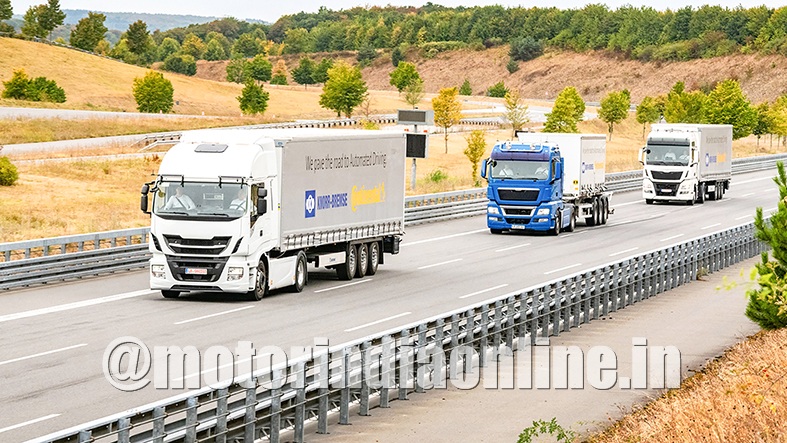TrendingNow – The latest in the field of automated driving is the development of a system solution for platooning for which technology company, Continental and braking system suppliers and simulation company, Knorr-Bremse, have come together. As a long-term plan that is pending validation and safety approvals, platooning as a prototype solution is being offered by the companies in confined parameters, already.

Interior Systems & Technology –
Commercial Vehicles, Continental
Mr. Joerg Luetzner, Interior Systems & Technology – Commercial Vehicles, said: “The launch of automated driving is tied to questions such as what it should do, where it should operate and the like. Currently, the trials are happening in a confined environment where there are limited risks and are known beforehand.”
Giving an unusual likening to the layers of an onion, he explained: “The inner core of an onion which is really small is like the confined area where the automated driving is carried out. The next layer represents the opening up of the geo-fence a bit which translates to adding features like say night driving or during rain.” Going further, officially it is their clear expectation that automated driving is an evolutionary approach starting in confined areas with confined use case and over a period of time, the experience thus gained will be utilized to improve the product.
IndiaCentric – According to Mr. Luetzner, India is on the roadmap for autonomous driving but the pre-requisite would be ‘to exclude the chaos in the first trials and use cases’ and that may be time consuming.
WhatWorks – Automated driving is being accepted as an important value addition globally because it makes perfect business sense – be it to increase efficiencies, to reduce fuel usage and costs or to reduce overheads for the fleet owner and operator, say by way of salaries. Mr. Luetzner added: “What we hear repeatedly is that the fleets are extremely interested in automated driving and now platooning. Their motivation is high. Manufacturers need to deliver that which their customer or fleets want.”
Another aspect that Mr. Luetzner touched upon was the increased safety features in the automated driving systems. He said: “Any sensor system is available every millisecond like how many times does the driver blink or if he is distracted.” And this is what interests the governments involved too – to reduce human error which is ‘the cause of accidents 90 per cent of the time in Europe’.
Challenges – There is a whole range of challenges that are being looked at. Validation, having a perfect picture of the environment, number of sensors to be used and where all they would need to be installed, planning the driving strategy are merely some of them. Mr. Luetzner shared: “What happens if the various systems fail. It means backup systems are needed. The research, pre-development, development which are underway address precisely these challenges. We are finding the solutions steadily.”
Besides the whole idea being a massive technical challenge, what the officials remind everyone of is the legal hurdles which are country specific. And the pre-requisite is for keeping the authorities in the complete knowhow with regards to the routes for example and other such crucial information.
Not just the concept of platooning or highway pilot, the entire topic of automation is one of the biggest challenges in the automotive industry today and it is a fact that everyone believes in it too.
